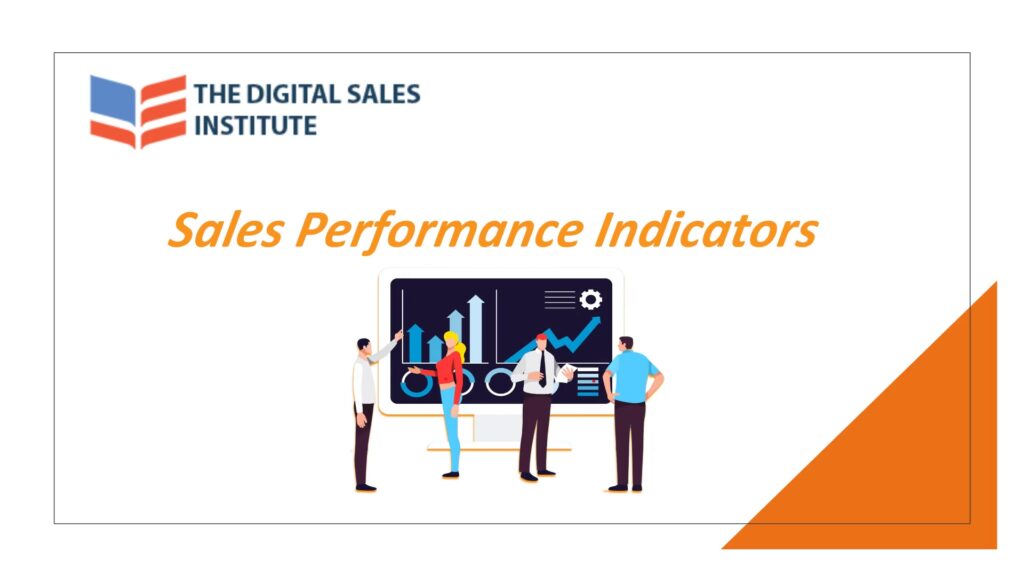Sales performance indicators help everyone, from salespeople to sales managers, direct their energy on the right sales activities. We know that successful selling is a function of focusing on the right activities. This means that if you want to measure your team’s performance, you need to start by tracking their daily activities. Also, sales performance indicators need to be measured for effective decision-making. Selecting the right performance indicators for the sales team allows managers, trainers, and leadership to see in real time where any salesperson needs to improve performance. When sales leadership focuses on optimizing these metrics, results improve. We know that selling today is a constantly evolving landscape; salespeople and sales leaders must remain agile to stay ahead in a noisy business environment. To stay competitive, every business needs to understand, engage, and serve customers effectively. What’s more, as customer needs are constantly shifting, modern salespeople must be agile and skilled in overcoming the challenges brought on by competitors and market trends.

Sales performance indicators and metrics.
First, the old saying “what gets measured gets managed” tells us that things improve when we better understand them. Sales performance indicators will usually measure revenue, profitability, activity, and individual sales performance against a set of targets or objectives. Also, performance indicators are a good guide to forecasting and what future outcomes will be expected if the current trend continues.
Performance Indicator One: Activity.
This indicator measures how salespeople performed over a certain time period. The output of this measure is to ascertain if the sales team is undertaking the necessary activities (calls, emails, sales prospecting, social selling, etc.) to hit the goal or objective. This report should record the calls, conversations, demos, and meetings each individual salesperson achieved in the given time period. Activity drives engagement, so if salespeople are not performing enough sales activities, the likelihood is that revenue goals will not be achieved. Selling is a producer’s profession, so it is important to measure this sales performance indicator on a salesperson-by-salesperson basis to see trends, anomalies, results, and sales training improvement. For transparency and to promote a healthy competitive sales environment, this report should be shared and discussed regularly so each salesperson can own their activity performance.
Performance indicator Two: Pipeline
As part of your overall sales performance indicators, a business needs to measure sales pipeline movement. While measuring sales activities gives a baseline insight into the sales effort, tracking the sales pipeline is much more important because it shows the output and results of the sales activities. Insights into how many opportunities are created daily/weekly or how many demos to get a valid sales opportunity. The average deal size, location, product type, etc. can also be measured via the sales pipeline. Another measure is the percentage of leads that move from one stage of the pipeline to the next. A healthy conversion rate indicates a healthy sales process. If the sales activity is on target but the sales pipeline is not moving, then it could indicate the wrong target audience, weak value propositions, product positioning, or lack of sales confidence. Only by measuring a salesperson’s pipeline can the business be sure that they are not only performing the right actions and saying the right things but also doing them on a scale that creates sales opportunities and qualified sales pipelines. Also, measuring this indicator helps determine which parts of the sales process have gaps. Conduct regular pipeline reviews to ensure that all leads are progressing as forecast. This helps to identify obstacles, training, and areas for improvement. Beware sales pipeline vanity. That is why it is really important to constantly remove inactive or dead leads from the pipeline regularly. This keeps your pipeline clean (and the salespeople) and focused on real opportunities.

Performance Indicator Three: Sales Goals.
Every salesperson in the organization must be working toward clearly communicated goals. Sales goals are the top-down company objectives that lay out the expected results, so salespeople are clear on their roles and responsibilities and accountable for every aspect of their performance. The best sales goals strike a balance between being challenging and being achievable. They also assist individual salespeople to focus, stay motivated, and contribute to the overall team or company goals. Sales goals, when communicated and reported on, will drive a culture of accountability and a more engaged sales force.
Tracking salespeople’s performances against specific goals will give insight into skill gaps, training needs, motivation, and their mindset toward achieving their own personal goals. Well-documented and communicated (regularly) sales goals should clearly outline the expected outcomes. Every salesperson must have a clear picture of what sales activity will be measured against which goal. Sales goals should also align with the organization’s strategic or high-level tactical goals. For example, if a company sets a goal to acquire 100 new customers in a certain time period, it wouldn’t make sense for a salesperson to focus 100% on existing customers. With that in mind, it’s very important that any sales goal is prioritized and has been evaluated to deliver the biggest impact.
Performance Indicator Four: Win/Loss
In a data-driven world, regularly conducting win/loss analysis as part of sales performance indicators will uncover data and insights as to why recent sales pipeline opportunities decided to buy (or not buy) from the company or salesperson. Managers and sales leaders should regularly conduct win/loss analyses to identify patterns and trends in the market to make business decisions on product, pricing, value propositions, ideal customer profiles, and channels. Some sales organizations have sales risk level metrics around close date moves, deal size, aging of deals, and commitments from the buyer.
It is important to examine your win/loss ratio regularly and ask the right questions about it. Getting input from lost customers about their decision-making process, insights from the salespeople about the interactions and negotiations, and information on industry trends and competitor activities will all contribute to a complete picture. Comparing customer wins and losses side by side can provide a deeper understanding of why one deal closes while another is lost (or usually postponed). When a business understands the various factors that combine to win deals, they can then fine-tune the sales process or sales conversations to replicate these successes. This might involve adjusting the value proposition, target audience, or features, advantages, and benefits to overcome sales obstacles identified.
Performance Indicator Five: Conversion rates
Sales performance indicators are way more than just a bunch of numbers. They are the health monitors of the business and are there to support future sales activities, training, activities, and goals and reduce unnecessary effort or resources. They provide visibility on how an organization is performing to influence more effective sales execution. The sales team and every salesperson should be clear that maximizing conversions from new and existing consumers is the ultimate objective of all sales efforts. A critical conversion metric is the lead (MQL or SQL) to opportunity conversion rate. This measures the percentage of leads that progress from initial contact to becoming a qualified sales opportunity. To calculate this rate, divide the number of leads converted into opportunities by the total number of leads within a specific period. A high lead-to-opportunity conversion rate indicates effective lead qualification and nurturing processes.
Sales conversion rates are therefore key for the sales and business strategy, as they demonstrate the impact on product appeal, target markets, and revenue growth. Measuring conversion rates will reveal where in the sales process salespeople have the most difficulty converting opportunities to the next stage. Analyzing the sales pipeline by stage will report exactly where the business or salesperson is losing deals. With this knowledge, sales training can be more effectively deployed in sales stages such as uncovering needs, presenting solutions, or clarifying interest versus intention. Also, understanding conversion rates by each stage in the sales process can help everyone forecast more accurately.
Performance Indicator Six: Total Revenue
It may sound obvious; however, it is worth highlighting that total revenue is one of the most fundamental sales performance indicators for assessing the direction of the overall sales or marketing strategy. It reports the total revenue and profits by product line, new or existing revenue streams, or by sales unit as a result of their sales activities against goals within a given period. To calculate total revenue, multiply the number of products or services sold by the respective selling price and sum the results. This measure is crucial in that it provides a pulse on the company’s ability to generate income and drive growth. This allows sales leaders to identify trends, set or adjust revenue goals, and constantly evaluate the effectiveness of the sales strategy.
Measurement, Monitoring and Adjustment
Putting in place sales performance indicators is not a one-off event. They require continuous monitoring and adjustment to ensure their relevance and effectiveness to the sales organization and the business as a whole. Today, business is in a constant state of flux, so sales strategies need to be agile and adapt quickly to changing market conditions or competition. All the performance indicators must be regularly reviewed and updated to reflect the current state of play.


